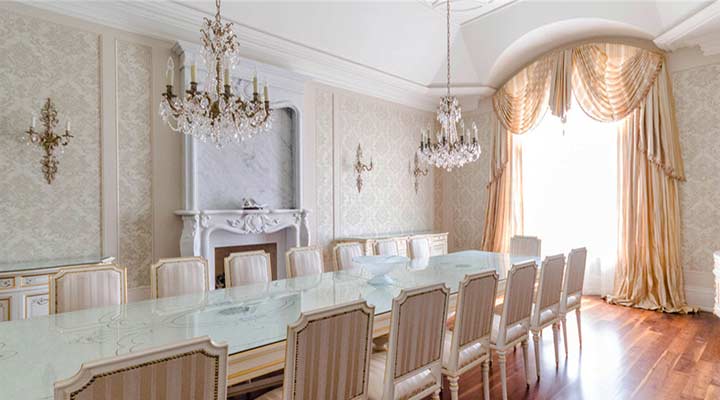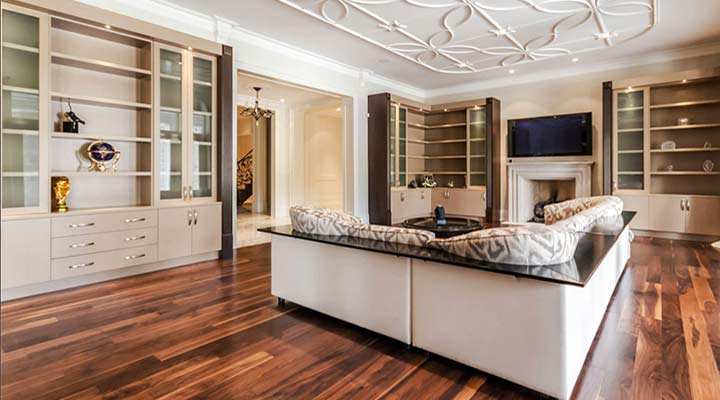
Embracing the Past with Traditional Interior Design
Mar 31, 2023 / Public Storage
When Josie Abate’s clients came to her with a request to decorate their custom-built home in the style of a French chateau, traditional interior design was a natural fit, to match the exterior and the owners’ tastes.
As the founder of Ambience Design Group, Josie has been transforming residential and commercial spaces for over 25 years and is expert at helping clients achieve their desired look. We asked her to share some insights on the appeal of traditional European design and how to adopt it at home.
People who desire this type of look are those who appreciate history, artifacts and ornate detailing, says Josie. “They might have done research and understand it or they just like the softness and symmetry and that it reminds them of something their ancestors might have had.”;
In the case of Ambience Design’s French chateau home project, the look was built around a dining set the client already owned and loved. “It was French style, in a light, ivory color with inlays of soft blues and feminine lines. It gave me insight on what to do with the floors, drapery, fabric and color scheme,”; says Josie.
If you are considering a traditional look for your home, first get to know what era you are drawn to. For example, the Victorian style typically includes heavy, dark woods, deep rich colors and an old-world feel.
If like Josie, however, the design era you’re targeting is French Louis the XVI, you’ll want to follow her lead and stick with lighter, feminine elements, curved lines and neutral colors to match that style. You may already have some furniture you would like to include or your eye on some pieces you’ve been wanting to purchase.
The look here can be created using European reproduction furniture or antiques, muted colors and understated patterns on walls and fabrics. Keep in mind classical European décor often reflects attention to detail and a sense of order.
Traditional design sometimes gets a reputation as stuffy or stodgy. To counter that, it doesn’t hurt to throw in some modern pieces. “Try incorporating pieces that are less ornate. Combine patterns or curved lines with straight lines to deliver a look that balances both masculine and feminine attributes. Shift the focus to comfort and practicality,”; says Josie’s daughter, Sara Abate, the company’s branding and communication director.
In the case of Ambiance Design’s client, the man of the house was fine with his wife making the decisions and making the most of the house traditional, but he also wanted some modern touches. “We made the basement his domain,”; says Josie. They worked to create a man cave with a more modern feel but married it with the same flooring and marble to tie it to the traditional look of the rest of the house.
Some of the hallmarks that make up this type of traditional European interior design include:
Architectural detailing – incorporating columns, carved molding, fine woodworking and ornate patterns.
Furniture – Curvy legs, detailed carved wood and soft edges are a giveaway for traditional style. Group furniture in arrangements that encourage conversation. Remember, this was before the time of TVs and smart phones!
Drapery – Use ornate patterns, trimming and tassels and layering fabrics. Puddling, valances, paneling and swags are details you want to include, as well as layering silks and sheers to add elegance.
Antiques – These can become focal points whereas they might be used just as accent pieces in other design styles.
Wallpaper – While traditional look wallpaper can be heavy with elaborate florals, today’s wallpaper doesn’t have to be. It can be very subtle, neutral in color and used to provide texture.
Metals – Use fixtures with brass, bronze, copper or pewter that have warm undertones, which lends an antique feel. Stay away from shiny chromes and golds.
Color – The traditional palette typically includes neutrals in beige, ivory and cream, but don’t be afraid to mix in rich tones such as bronze and gold accents, warm greens, subdued blues and deep reds to add drama, warmth and style.
With a little research and trust in your instincts, traditional design isn’t difficult to create. If it feels comfortable to you, you’ve got it right!








